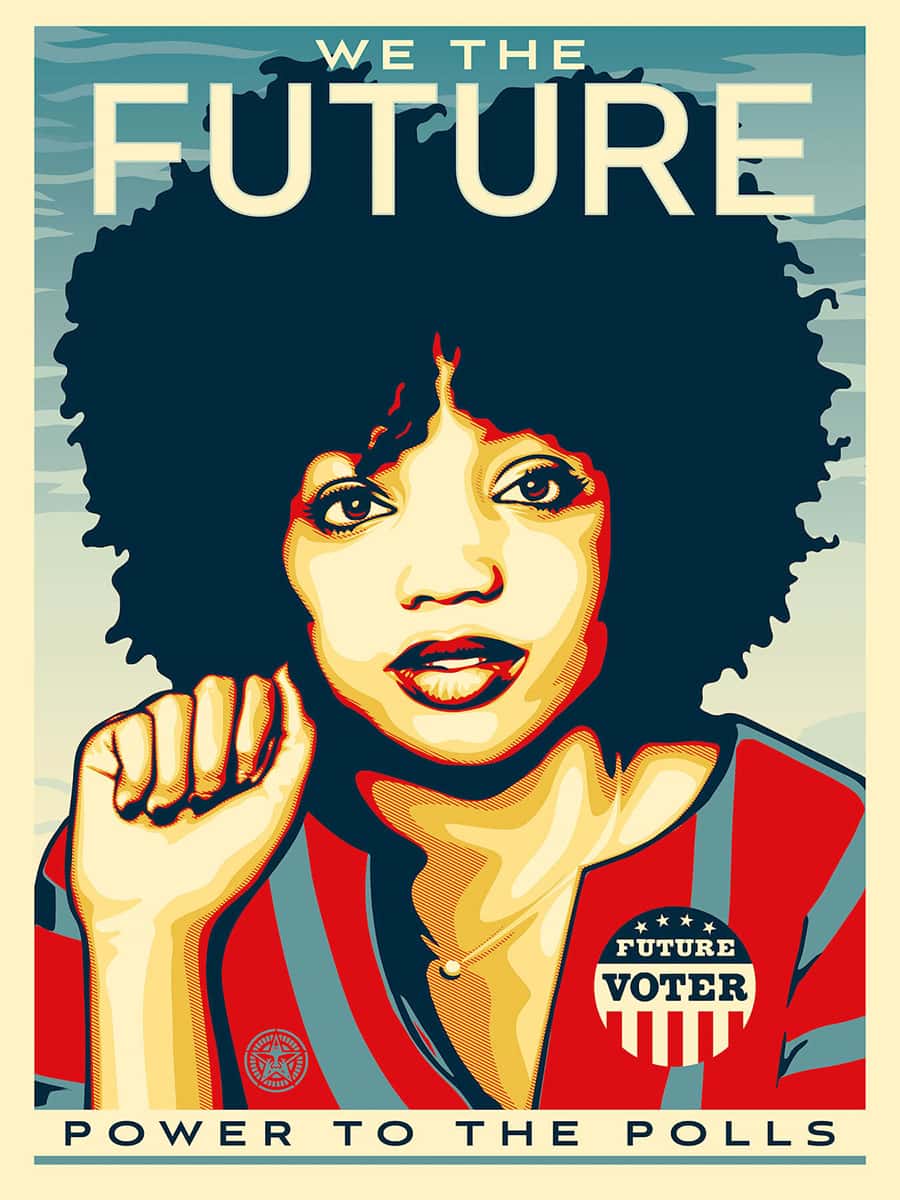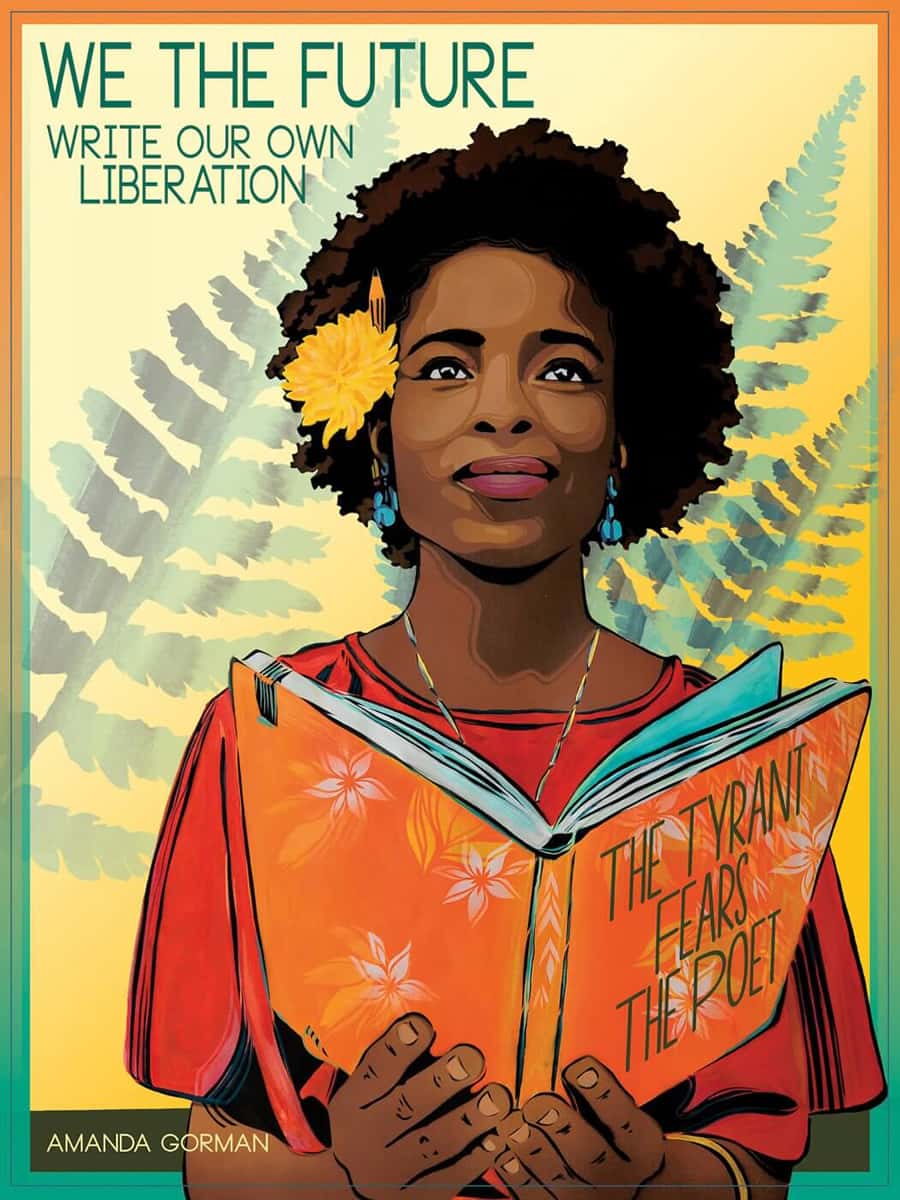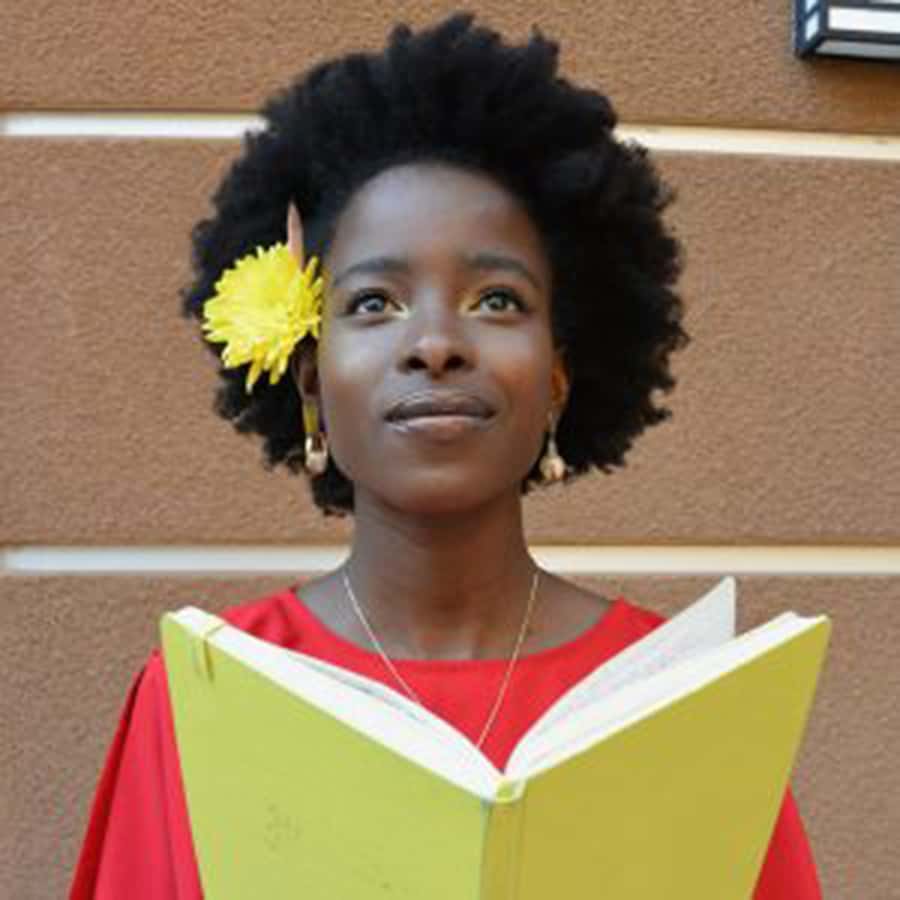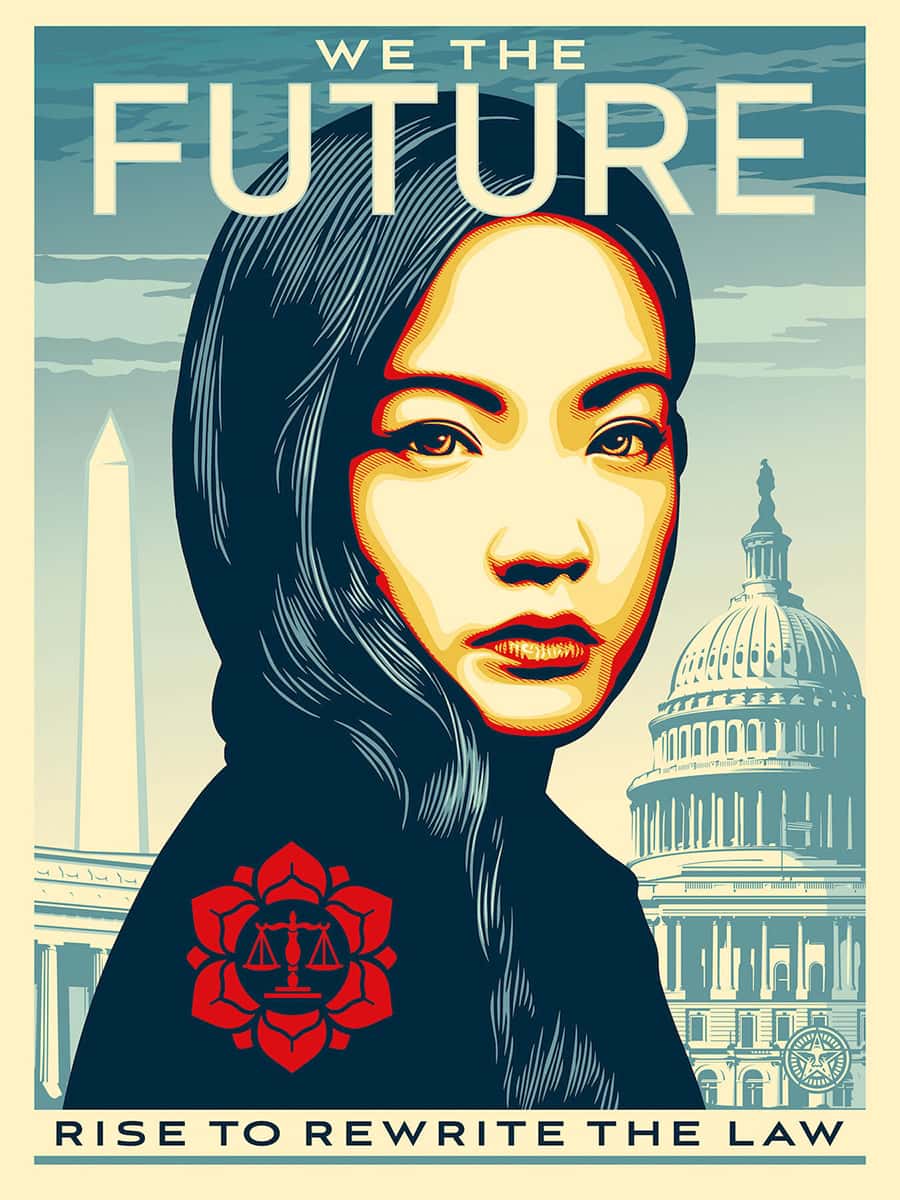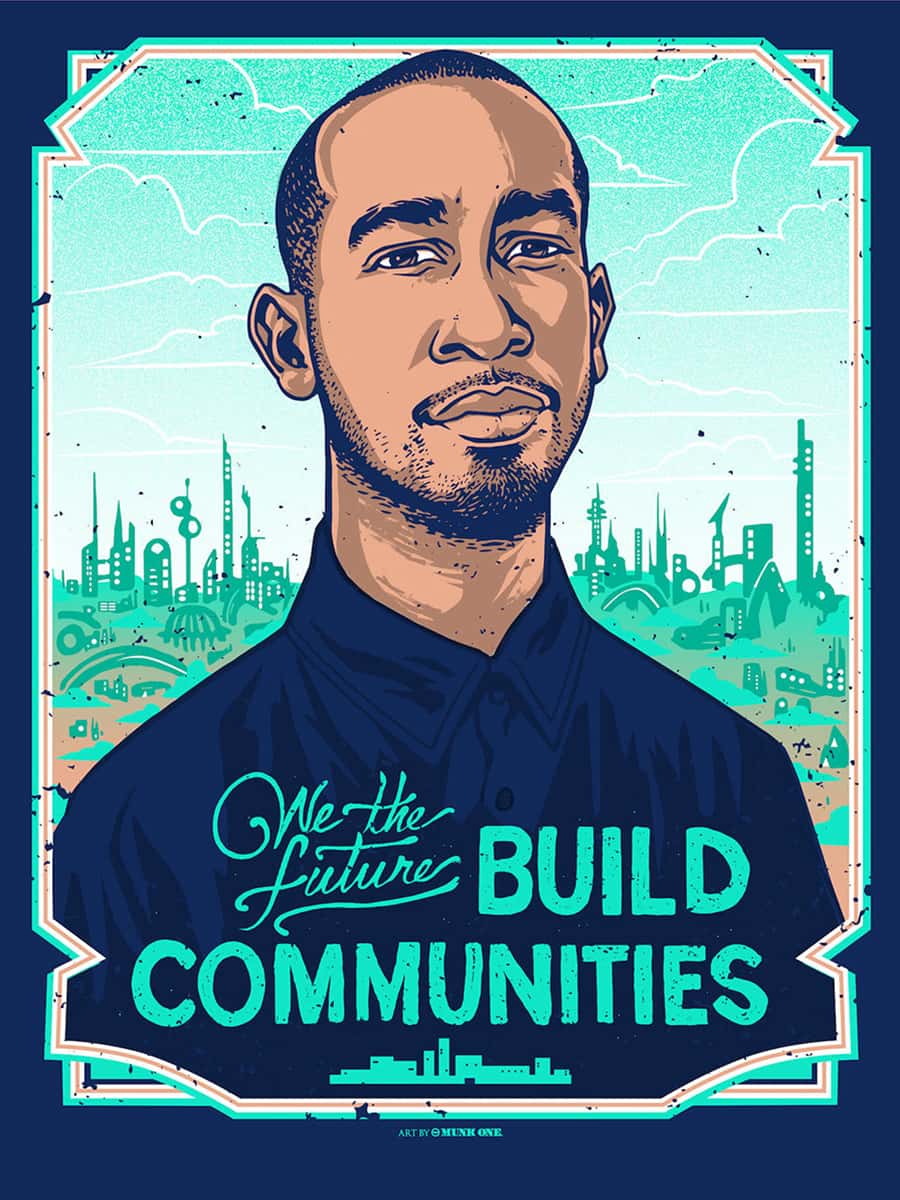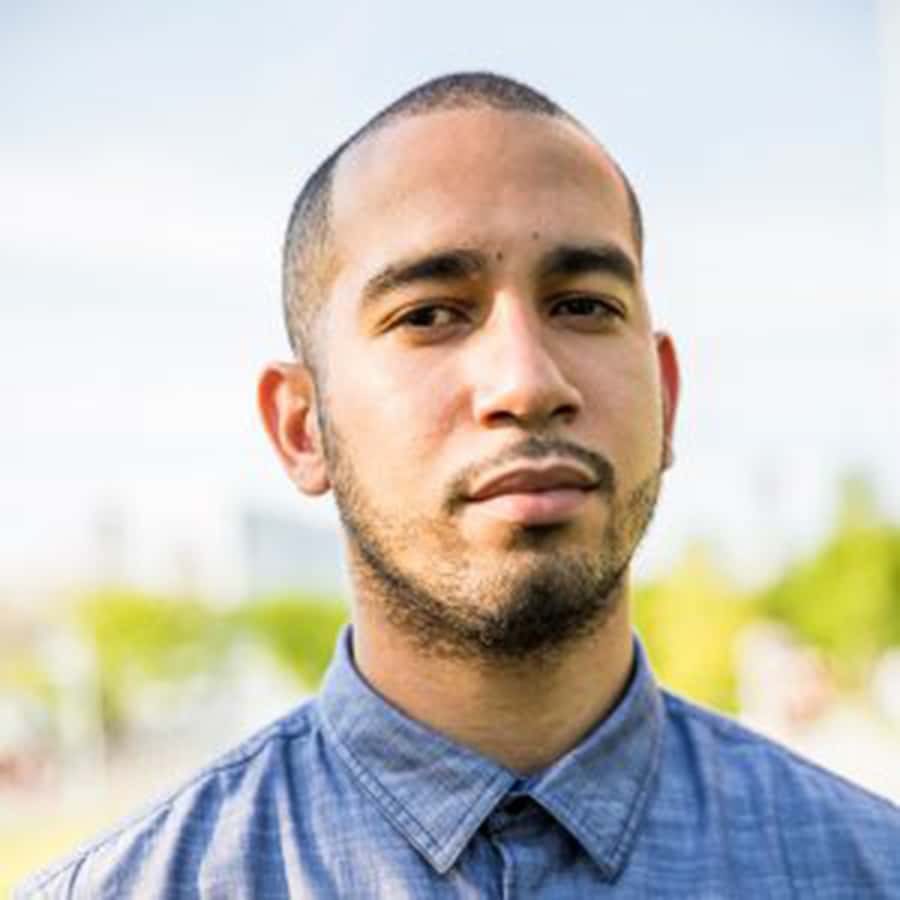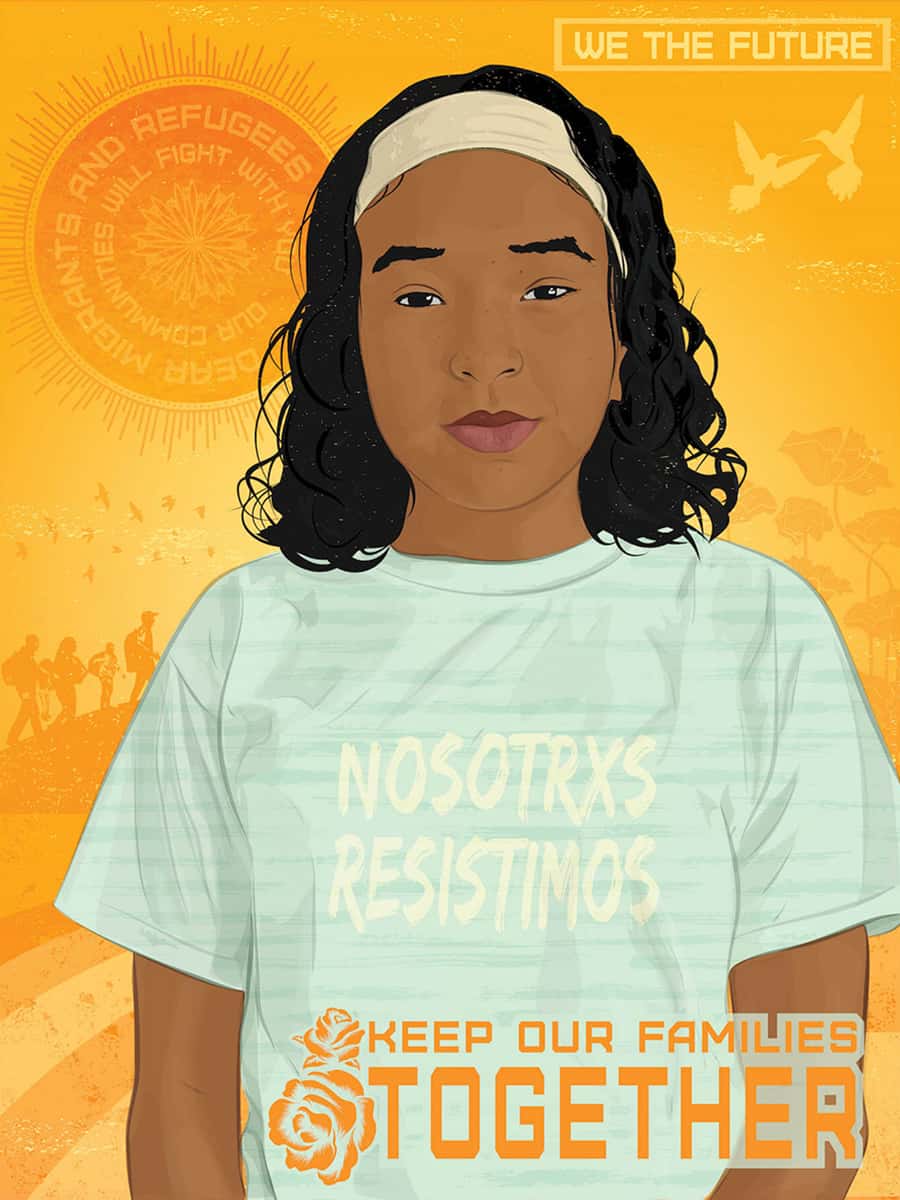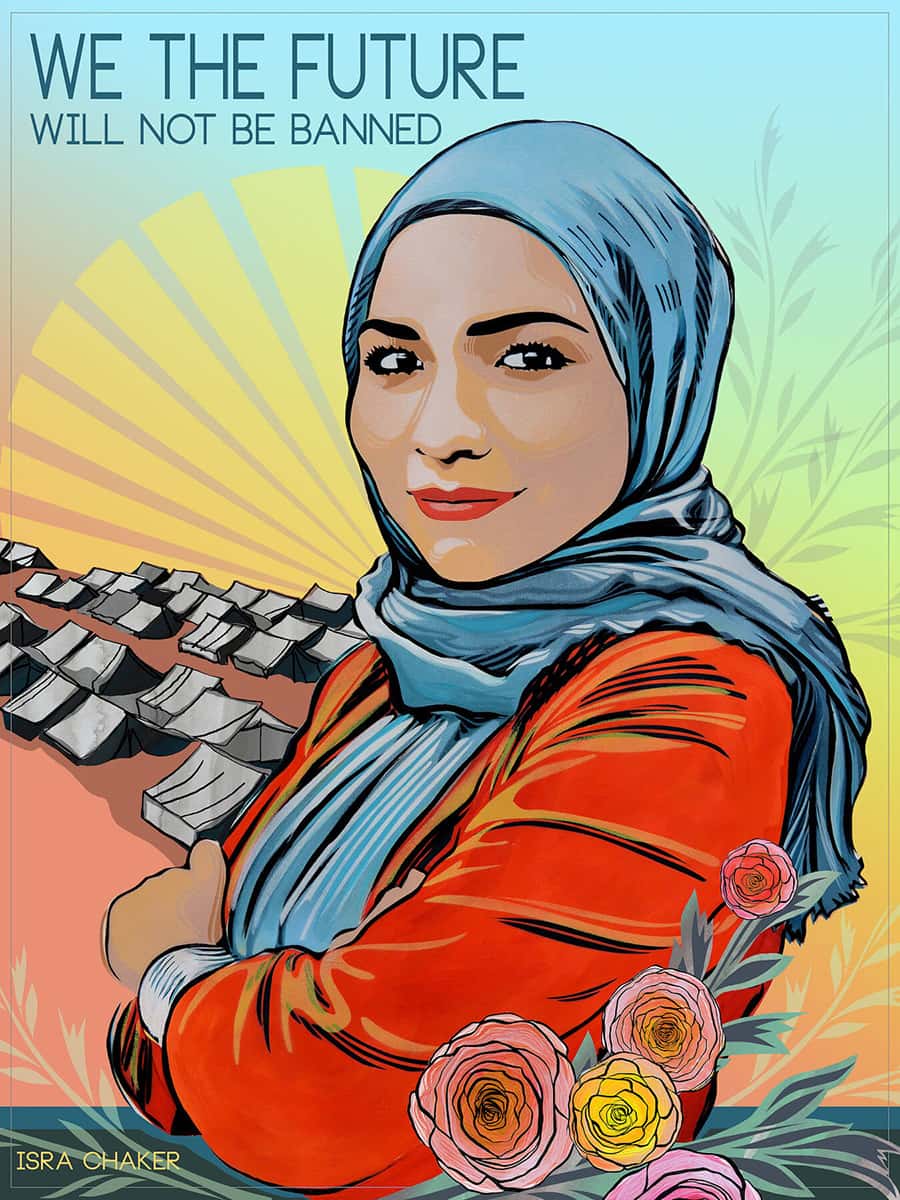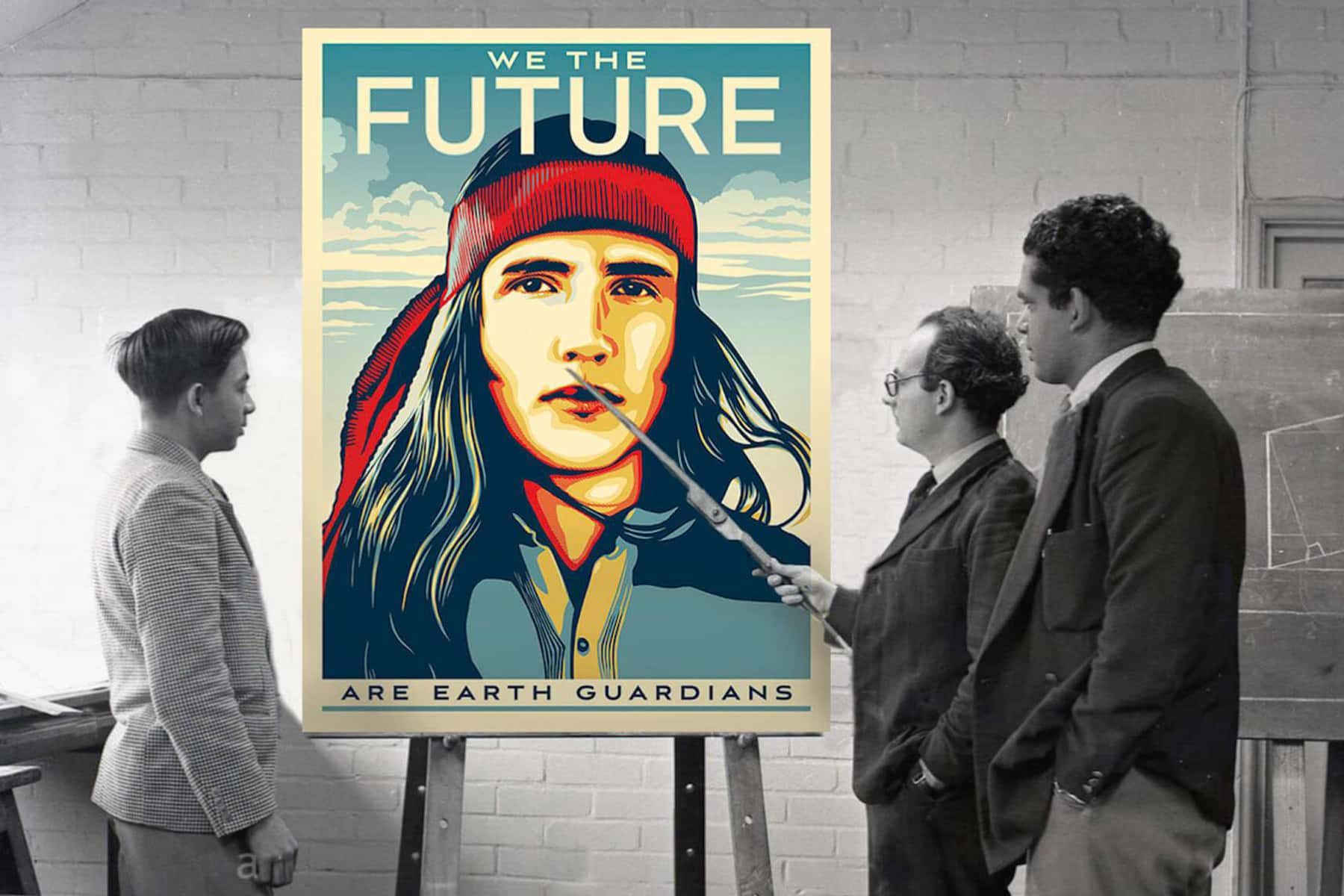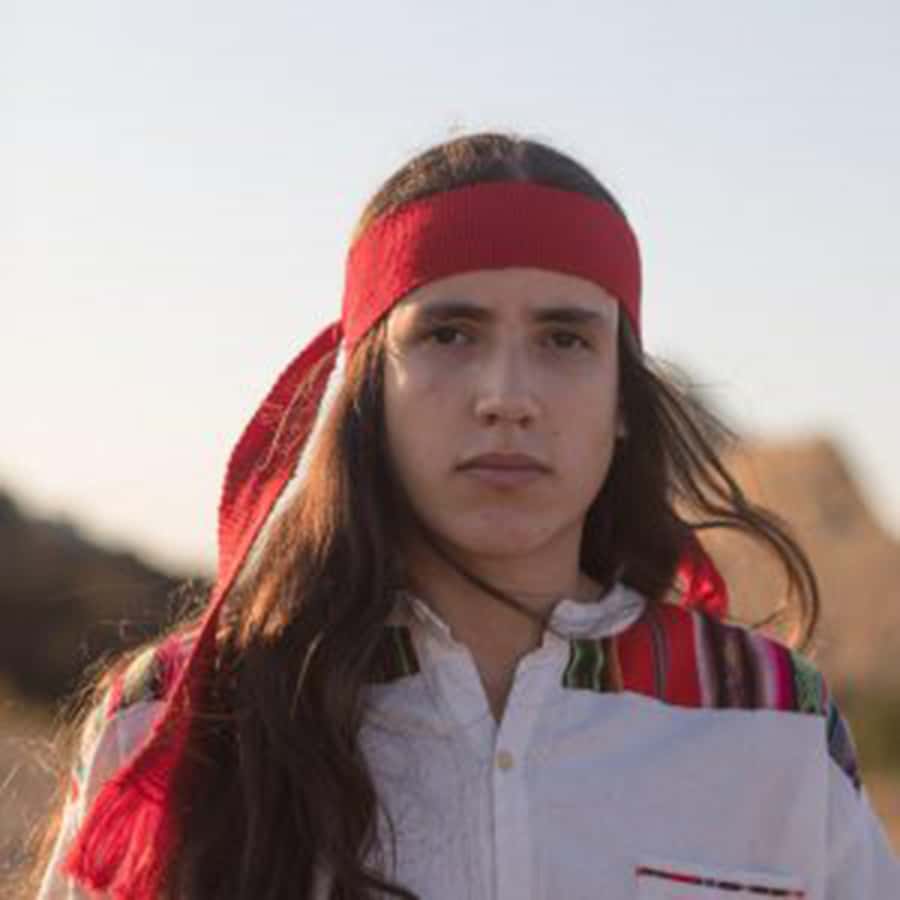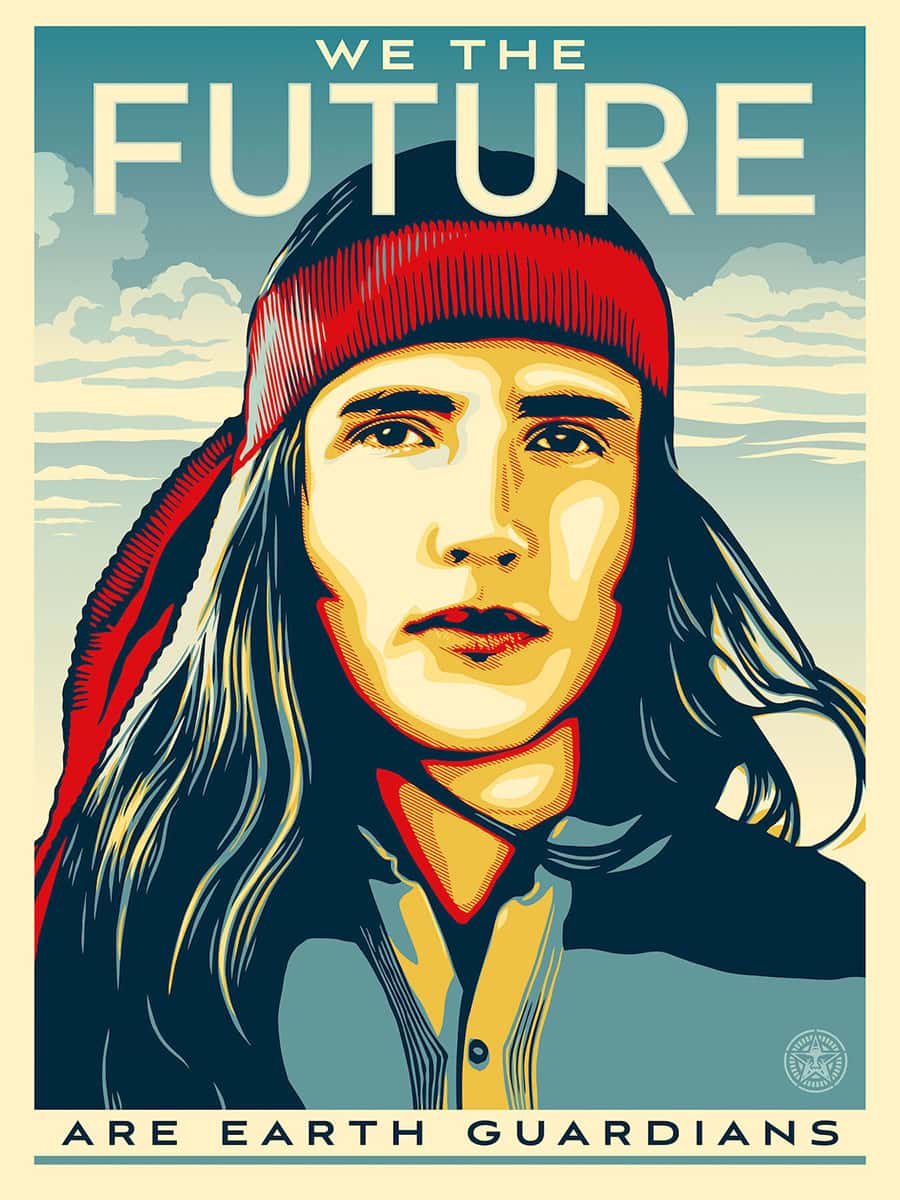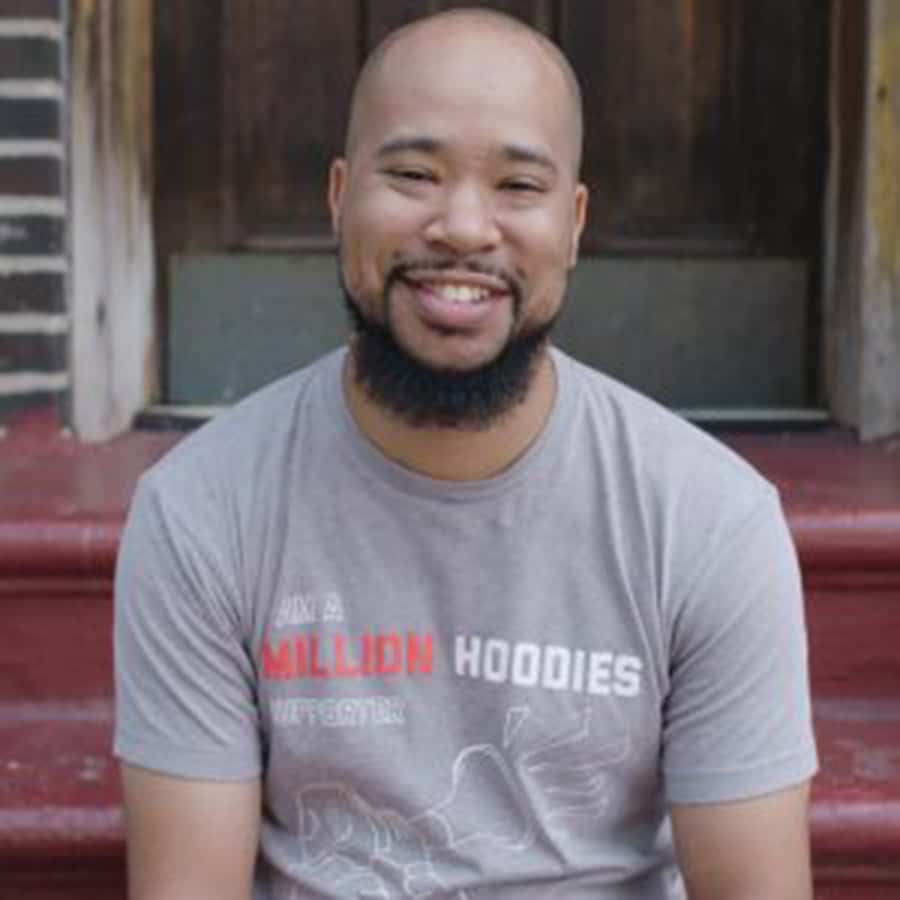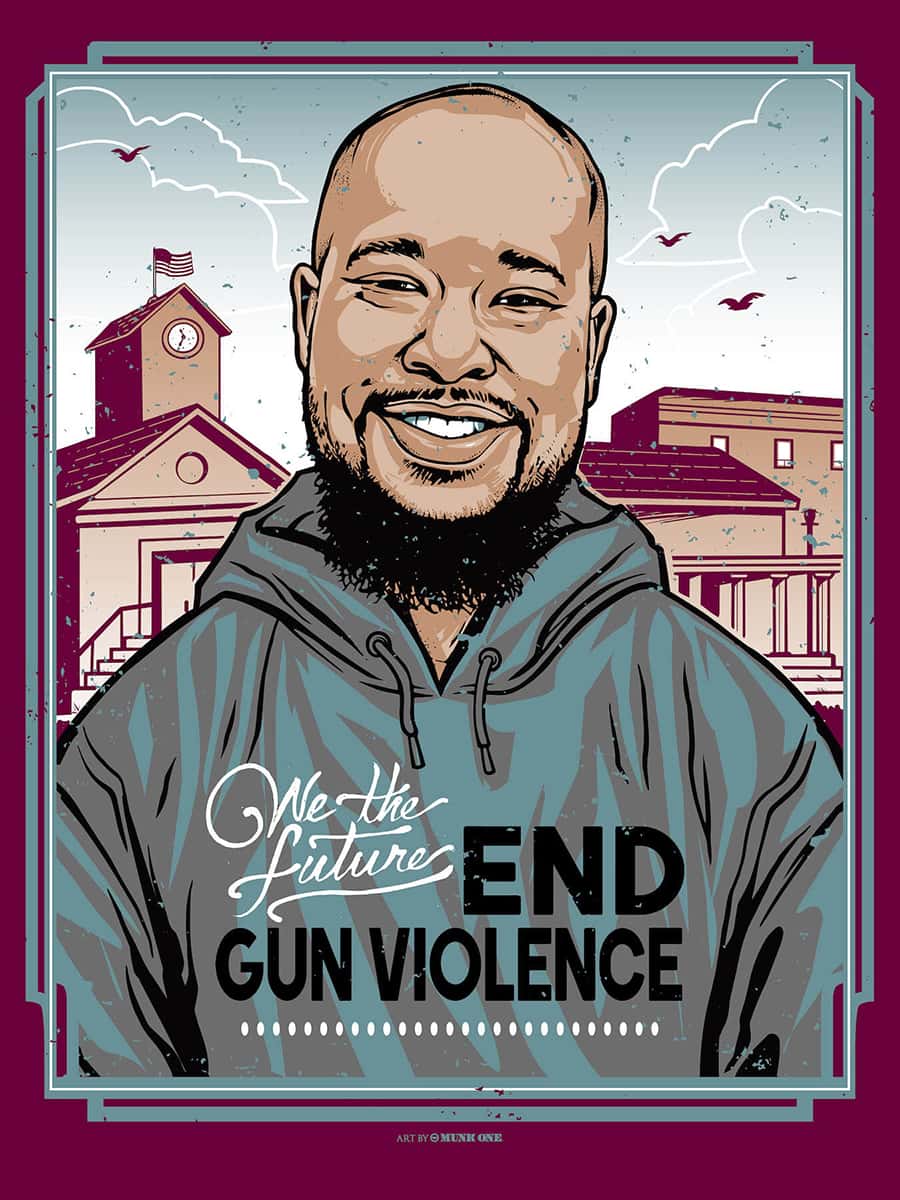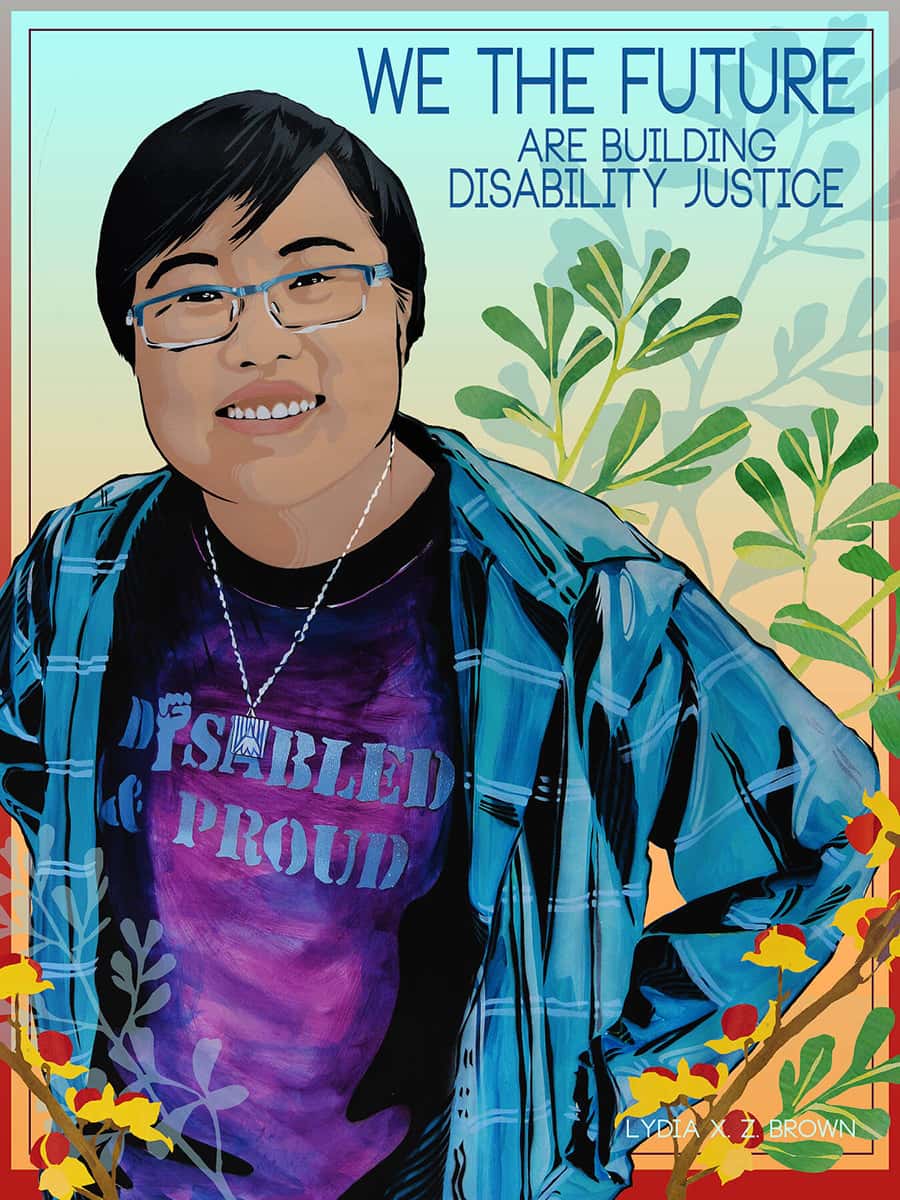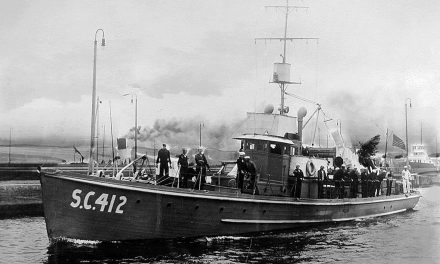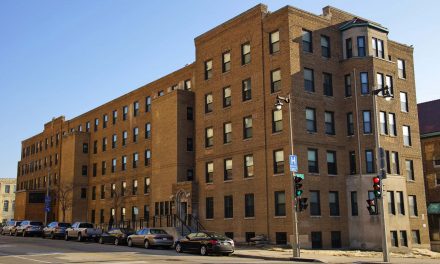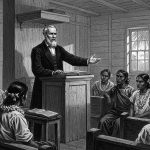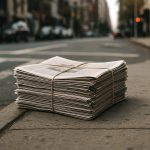
“Amplifier is working to get art out in a way that will reach a critical mass and calls students to ask questions, think about the art and the message behind it, and create an understanding of the world around them. #WeTheFuture will be addressing a number of topics. It’s a template created for students to understand exactly how you can use images, symbols and people who have done real work to bring up issues that those students want to see addressed. It will showcase that we all, young and old, have the ability within their own lives to create things that create change.” – Shepard Fairey
Last year, We The People, a nonpartisan public art campaign by Amplifier, pushed back against the fear and bigotry that surfaced during the divisive Presidential campaign of 2016 with one of the most viral political art projects in history, flooding the streets of Washington, DC and of cities and towns in 195 countries worldwide with new images of hope. The effort was dedicated to igniting a national dialogue about American identity and values.
This year, Amplifier is shifting from American streets to local schools as it launches the next chapter of this project, We The Future. The expense of paying for the printing and distribution of the posters and information will be borne by crowdfunding through a Kickstarter campaign.
Students spend an average of 1,200 hours a year in school, and in today’s climate of unprecedented fear and disinformation, what they see on their classroom walls – or don’t see – matters more than ever. Amplifier’s “We The Future” campaign will deliver free art and accompanying lesson plans to more than 20,000 classrooms during the 2018/2019 school year. These physical prints and digital toolkits outline clear paths to action that any student can follow.
The new “We The Future” portrait series showcases 10 young leaders who represent 10 diverse movements, each carrying the energy of countless communities from every background.
In partnership with artists Shepard Fairey, Rommy Torrico, Monk One, and Kate Deciccio, the campaign supports these icons as they draft and pass legislation, mobilize the youth vote, and lead efforts on criminal justice reform, queer justice, immigration justice, immigrant rights, gun violence prevention, disability justice, youth literacy, and climate justice.
“Amplifier searched for creatives around the country whose work exemplified clear communication,” Barnett said. “These youth leaders produced content for the information packets alongside the organizations with which they are involved and an education director at Amplifier. The message to students in these classrooms is clear: Young people are working on important issues of the day, and so can you.”
Munk One, for example, is known for creating album artwork and merch for the likes of Pearl Jam, Primus and Soundgarden. Rommy Torrico, a digital graphics artist, said that when the “We the Future” campaign reached out, they said they’d been watching Torrico’s work for a while. “I was pleasantly shocked, and thought to myself ‘you’ve been watching me?’” Torrico said. The portraits Torrico created were of 13-year-old Leah, being underage, her last name was not used, a Miami resident who has Nicaraguan background and is a youth leader of Families Belong Together, and Lindsay Amer, a 26 year-old queer activist.
Another selected artist, Oakland, California-based community artist Kate Deciccio created three portraits—of 19 year-old youth literary activist Amanda Gorman, 25 year-old disability justice advocate Lydia X.Z. Brown and 27 year-old immigration justice advocate Isra Chaker—through stenciled images that were reproduced digitally. “Amplifier matched me with these three activists,” she said. “I met with them, and we talked about how they wanted to be represented.”
She then took a series of photographs of each of the young women, working with them to select the ones they preferred as reference images, allowing each of the activists to have final approval of the portraits. Deciccio referred to her style of portraiture as “counter-narrative,” representing people in the way they see themselves, rather than how others see them. For all the artists and activists who have taken part, the hope is this initiative might deepen the way that others understand the work they take part in as well.
© Art
Shepard Fairey, Rommy Torrico, Munk One, Kate DeCiccio, and Amplifier

